Stapeliads, succulents from South Africa and Arabia, produce some of the most unusual flowers of any in the plant kingdom. These star-shaped blooms use color, texture, and odor to resemble decomposing meat. Your dogs may find them fascinating (mine do). Fingerlike leaves of stapeliads are generally soft, upright and four-angled, with ridged edges. Points along stems are safe to touch.
"One of the dirty tricks we succulent geeks like to pull is to have someone take a big whiff of the unusual starfish flowers of a stapeliad," Jeff Moore of Solana Succulents nursery says in his book, Soft Succulents. "The plants have opted out of the bee pool and decided to use flies as pollinators, hence the smell of rotting flesh.”
Stapeliads, Jeff adds, “are mostly nice little spineless, often fuzzy collections of small columns, but the attraction is really the diverse array of alien-looking flowers. They even look cool as puffed-up pods a few days before they peel open.”

Stapelia gigantea in bud (scroll down to see the flower)
Below: Orbea lutea takes floral seduction a step further: Black threads on petals dance in the slightest breeze. CLICK to see Orbea lutea in action.
Stapeliad Care and Cultivation
Considering how fascinating they are, it's a wonder stapeliads aren't more widely cultivated. Jeff speculates that they're too equatorial for most collectors, and need to be greenhouse-grown. Here in Southern CA, a handful of species do well as potted plants, and several (notably Stapelia gigantea) survive in garden beds.

Map of region where stapeliads grow: Mainly bordering the Red Sea
- Water: As with most succulents, keep soil barely moist. Water once every week or so in summer; less in fall and winter depending on the weather; and minimally in winter. Protect from soaking rainstorms. Stapeliad collector Jen Greene advises in her article for the San Diego Cactus & Succulent Society newsletter: “Water when stems start to wrinkle and shrink or droop. It’s easier to rehydrate the plant than to save it from rot.”
- Flowers: Jen also applies half-strength fertilizer to encourage prolific blooms. She uses dilute fish emulsion, which she says smells worse than the flowers! The Henry Shaw C&SS advises, “for maximum floral display, repot frequently. Flowers appear only on newer stems, so older stems can be removed without losing flowering potential.”
- Propagation: Take cuttings in spring as the weather warms. They’ll produce roots when laid flat on succulent soil. Jen keeps soil damp so it doesn’t turn “into dust until the cutting has firmly rooted.” She wiggles it to check; a rooted cutting will feel like it has “grabbed-on.”
- Soil should drain exceptionally well. Use a 30-30-30 blend of cactus mix, coarse sand (like decomposed granite) and pumice.
- Pests and problems: Main enemies of stapeliads are mealy bugs and black rot. If you see any patches of the latter, remove them immediately. Drench the plant with fungicide and repot in fresh soil.
Stapeliads to get you started
Most stapeliads have a growth spurt in late fall and early winter, which also is when they bloom---and IMHO, the flowers are the main reason to grow them. Shown here are readily available varieties, some of which I grow in my own garden (Southern CA Zone 9B). These are, however, a mere fraction of the species that exist (and tend to be more finicky).
Many thanks for the use of their photos: collectors Pat Roach and Rich Zeh, Mountain Crest Gardens nursery, and newsletter subscriber Ray Burge.
Hoodia gordonii: Native to arid habitats in South Africa and Namibia, this succulent has long been used by indigenous peoples of South Africa to assuage hunger pangs on Kalahari hunting trips. Because of extreme interest in the genus as an appetite suppressant, trade is restricted.
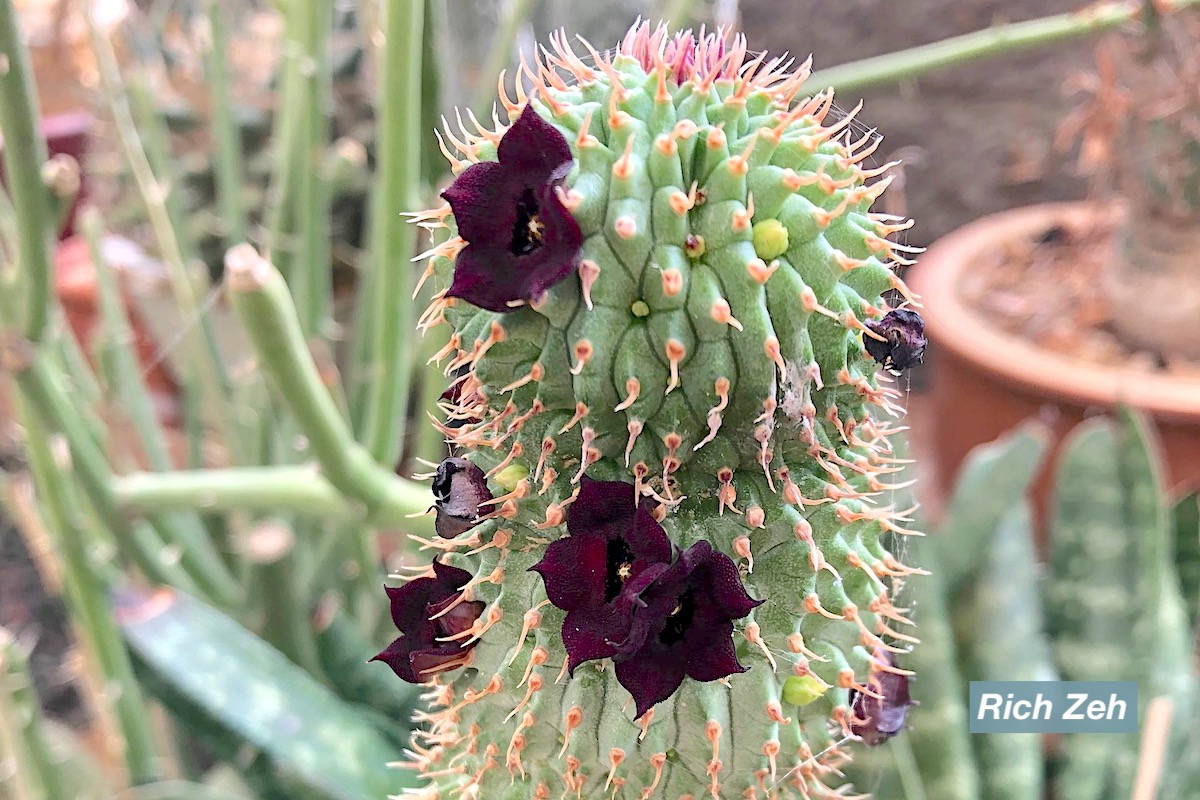
Hoodia parviflora
Hoodia parviflora: This largest species of Hoodia can grow to the size of a tree — as tall as 6 or 7 feet. Its small maroon flowers are known for their particularly obnoxious smell.
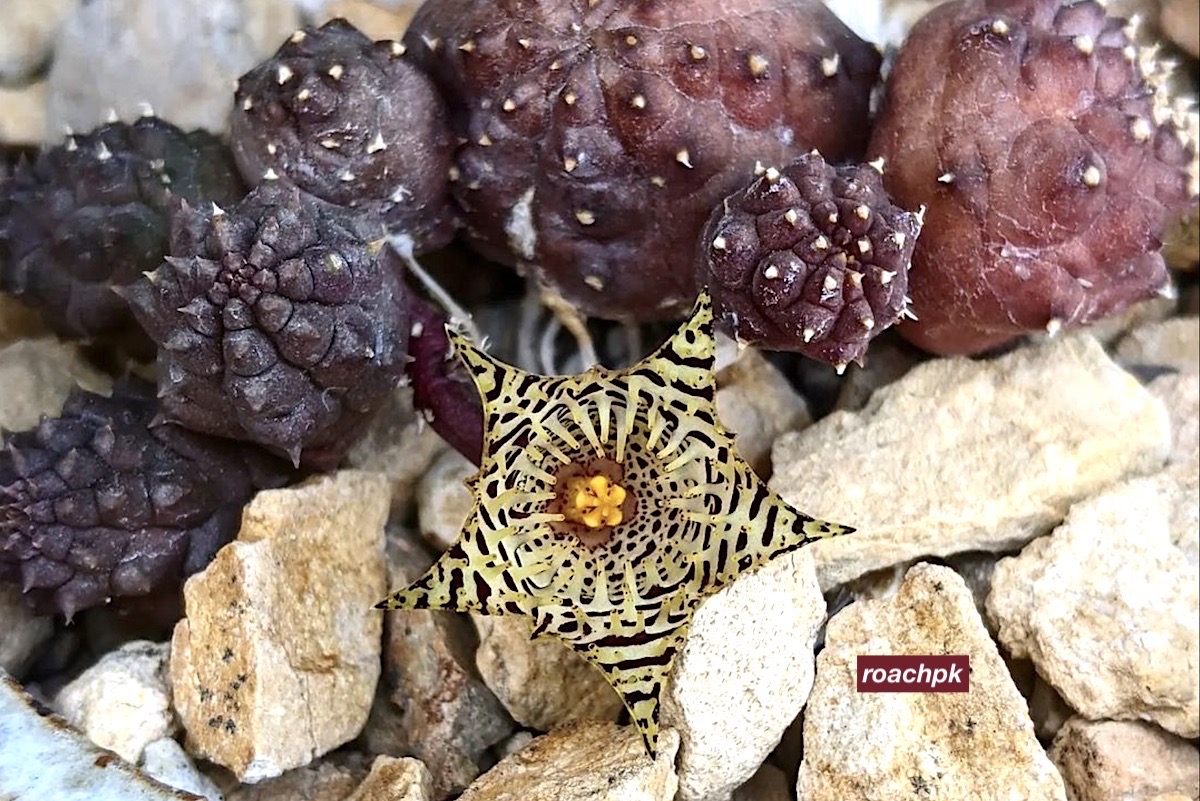
Huernia kennedyana
Huernia kennedyana: It's known as the "Humpty Dumpty" huernia for its egg-shaped (globose) stems. Dark red indicates summer stress; stems will revert to green in winter. Tiger-striped flowers are about an inch in diameter.
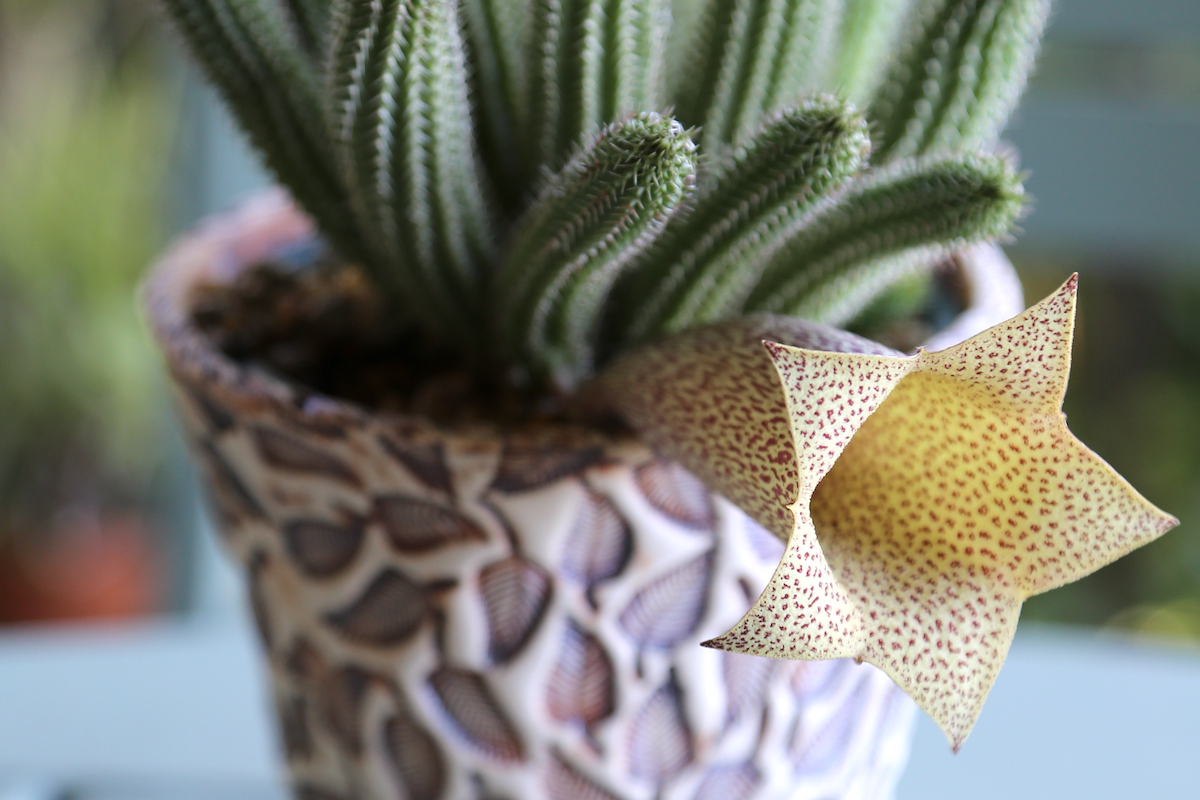
Huernia longituba
Huernia longituba: The species name means---no surprise---"long-tubed," and refers to the plants' elongated, bell-shaped blossoms. Native to Botswana. Btw, those dots are bumps (tubercles).
Huernia mccoyi: One of the easier stapeliads to grow, it also flowers profusely. Blooms, which form near its base, are five-pointed funnels. Atypical of stapeliads, this one is odorless.
Huernia procumbens: Produces large, sea-star-like, pale yellow flowers with a raised burgundy ring at their centers. "Procumbens" refers to the sprawling, trailing habit of the plant's many stems.

Huernia thuretii
Huernia thuretii ranges in color from apple green to deep burgundy. It produces pale yellow, multipointed flowers with a recessed center cup.
Huernia thuretii var. primulina: Green stems become tipped with pink and purple when grown in bright sunlight. Yellow flowers sprout from the base to form cupped stars.
Huernia zebrina has a prominent center ring that resembles a red candy Lifesaver. Surrounding the raised ring, pale yellow petals banded in red form five points---actually ten, if you count the mini-ones midway.
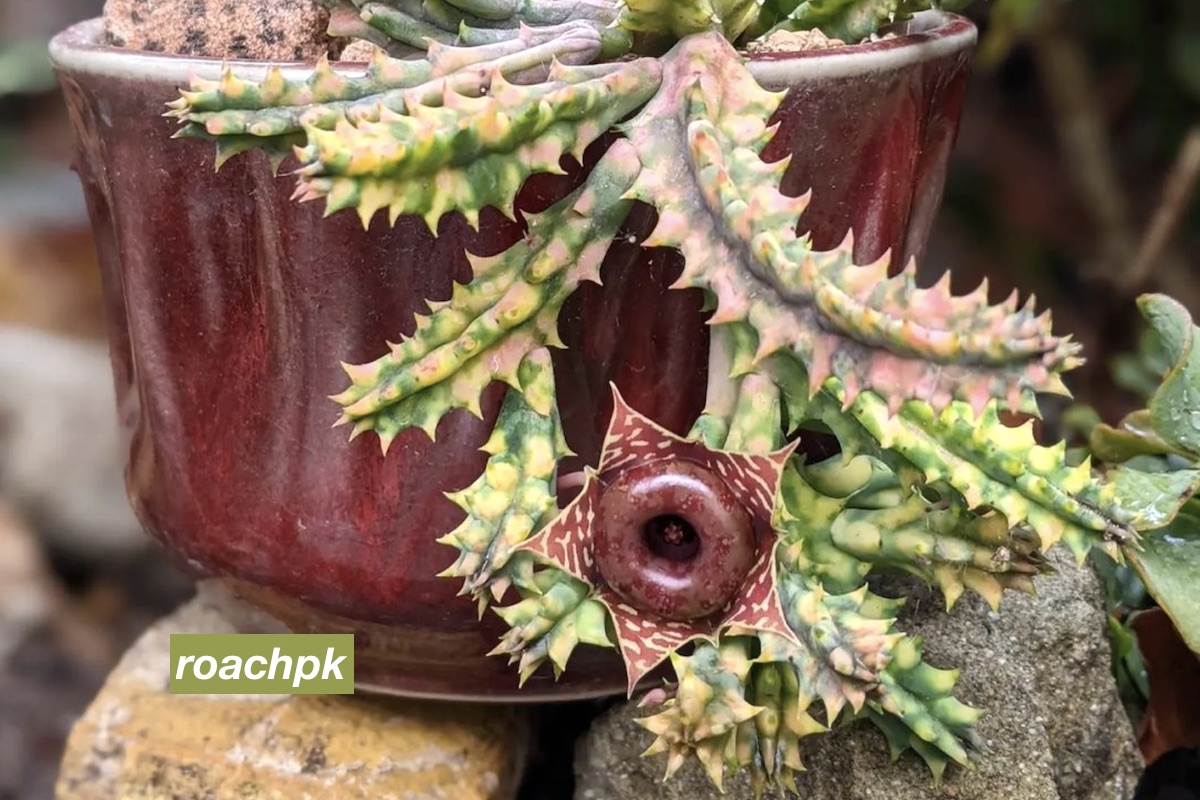
Huernia zebrina has a rare variegated form. This one, in the collection of Pat Roach, came from Rojas Succulents in Fallbrook, CA.

Orbea sp.
Orbea sp.: I've included this because it's a charming stapeliad that I'm pretty sure is an orbea. However, its owner (at the C&SS show where I shot it) didn't know the species. It's also found nowhere online. So if you recognize it, would you LMK? Flowers are about an inch across and leaves are stubby.
Orbea variegata: This forms a dense cluster of thorny-looking stems. Leathery-petalled, sci-fi flowers up to three inches wide are pale yellow and speckled with burgundy. Note the prominent five-pointed star at center.
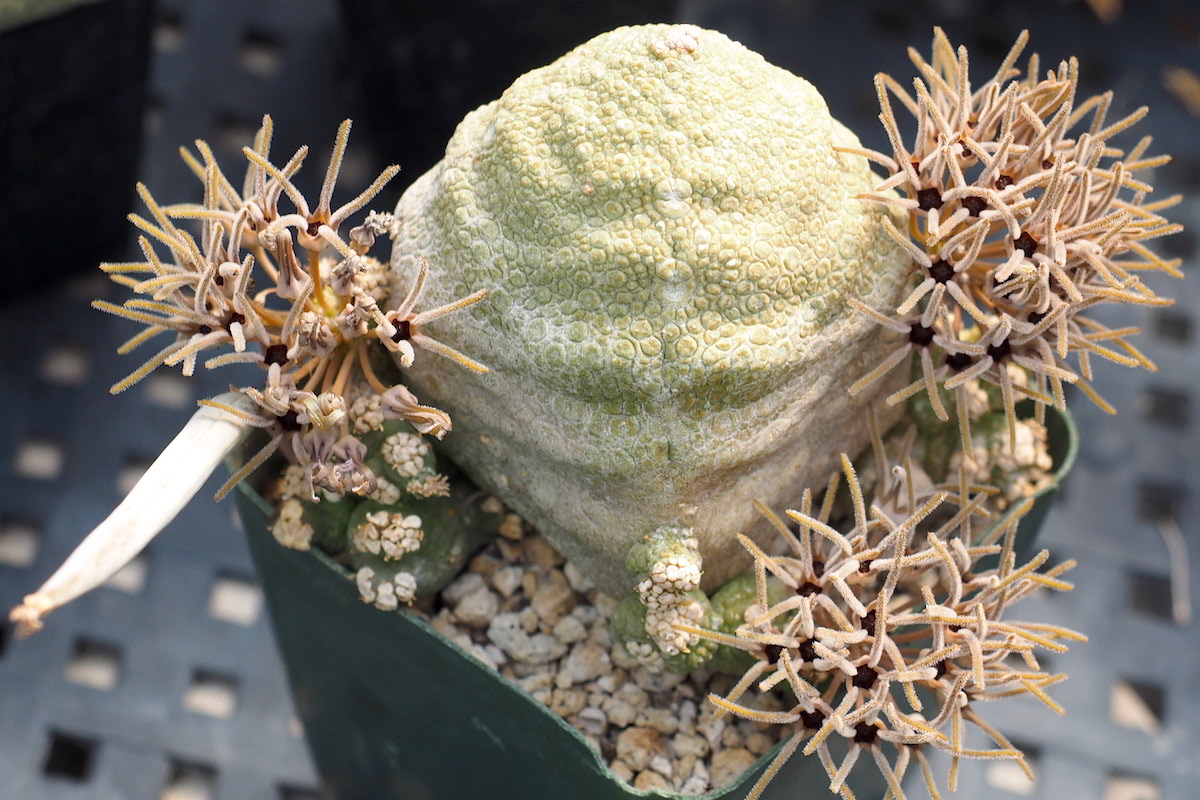
Pseudolithos cubiformis
Pseudolithos cubiformis: This is one of the craziest-looking plants. Its name means "false stone" and I see why, but it reminds me of Turkish delight candy. Or perhaps a petit-four. It's native to Somalia, and it was only while researching this article I discovered that Pseudolithos is a stapeliad. Those flowers! Btw, I shot this at Petra Crist's Rare Succulents nursery.

Stapelia gigantea
Stapelia gigantea, with flowers up to 10 inches across, has some of the largest blooms of any succulent. Leaves grow to about 8 inches tall, and are colony-forming. One of the few stapeliads that will grow in the ground in Southwest gardens.

Stapelia grandiflora in a San Diego garden
Stapelia grandiflora has meat-colored petals and fur, the better to persuade flies that it's a putrescent animal.
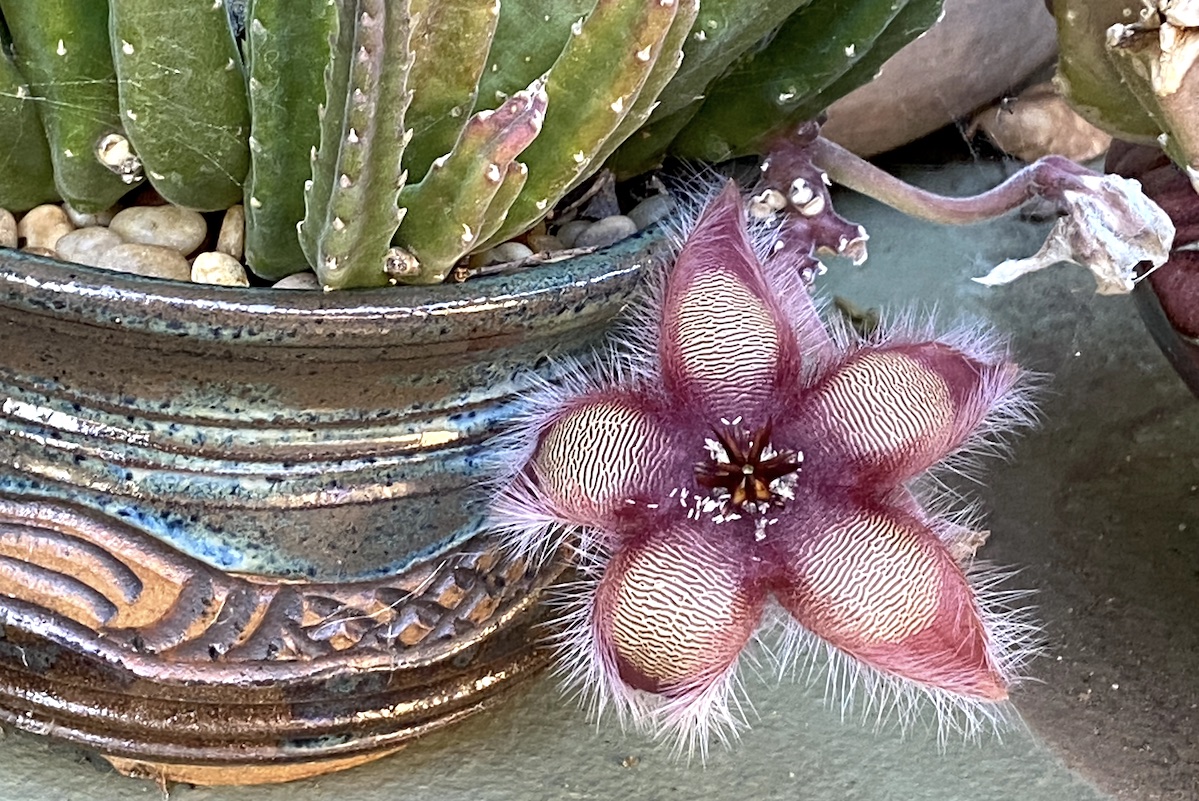
Stapelia grandiflora flower, after flies laid eggs (some of which have hatched) at its center.

Stapelia hirsuta
Stapelia hirsuta: I love when a species name is helpfully descriptive. "Hirsute" means "hairy." Only thing is, we've seen hairier stapeliads. This one does, however, a super job resembling carrion. It's native to the far west of South Africa, where it receives winter rainfall similar to Southern California's.
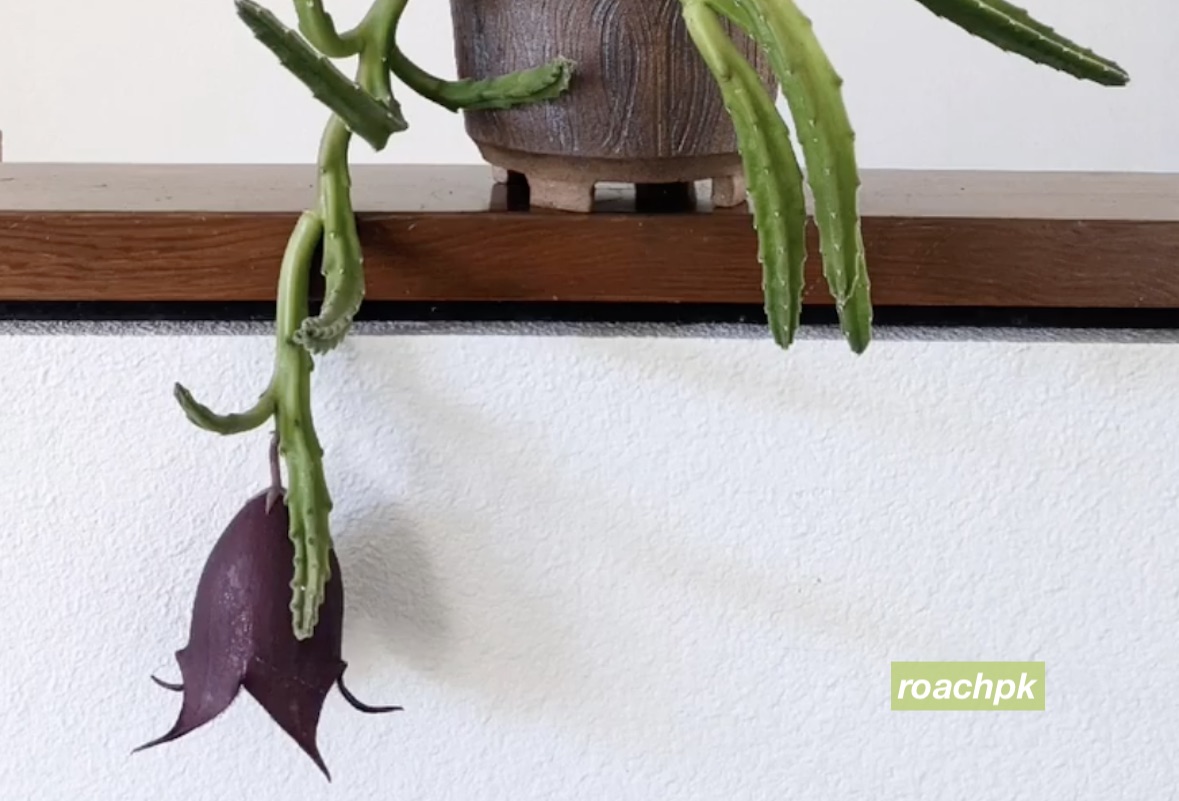
Stapelia leendertziae (black bells)
Stapelia leendertziae's dark maroon, bell-shaped blooms give the plant the common name "black bells." The flower is an impressive 4 inches in length.
Stapelia paniculata ssp. scitula, despite looking like furry beef jerky, doesn't smell like other stapeliad flowers---a good thing.
Did you enjoy this excursion into the world of stapeliads? Tell us in the comments below...and do share your own experiences with these weirdly wonderful succulents!
Related info on this site
Types of Succulents from Aeonium to Zebra Plant, Photos & IDs
Debra’s Dozen Easy-Grow Succulent Plants for Beginners
Trying to make sense out of succulents? There are numerous varieties, but these are the most common succulents and those you’ll likely run across. Enjoy growing and discovering these fascinating “plants that drink responsibly!”
See Rich Zeh’s 30-Year Succulent & Cactus Collection
Rich Zeh has an Aladdin’s trove of cacti and succulents. “I’m pretty much maxed out on space,” he says of his one-acre garden and greenhouse in Paradise Valley (Phoenix) Arizona.
The post Success with Stapeliads (Carrion Flowers) appeared first on Debra Lee Baldwin. Copyright © Debra Lee Baldwin.
from Debra Lee Baldwin https://ift.tt/UVGFtbB
via IFTTT


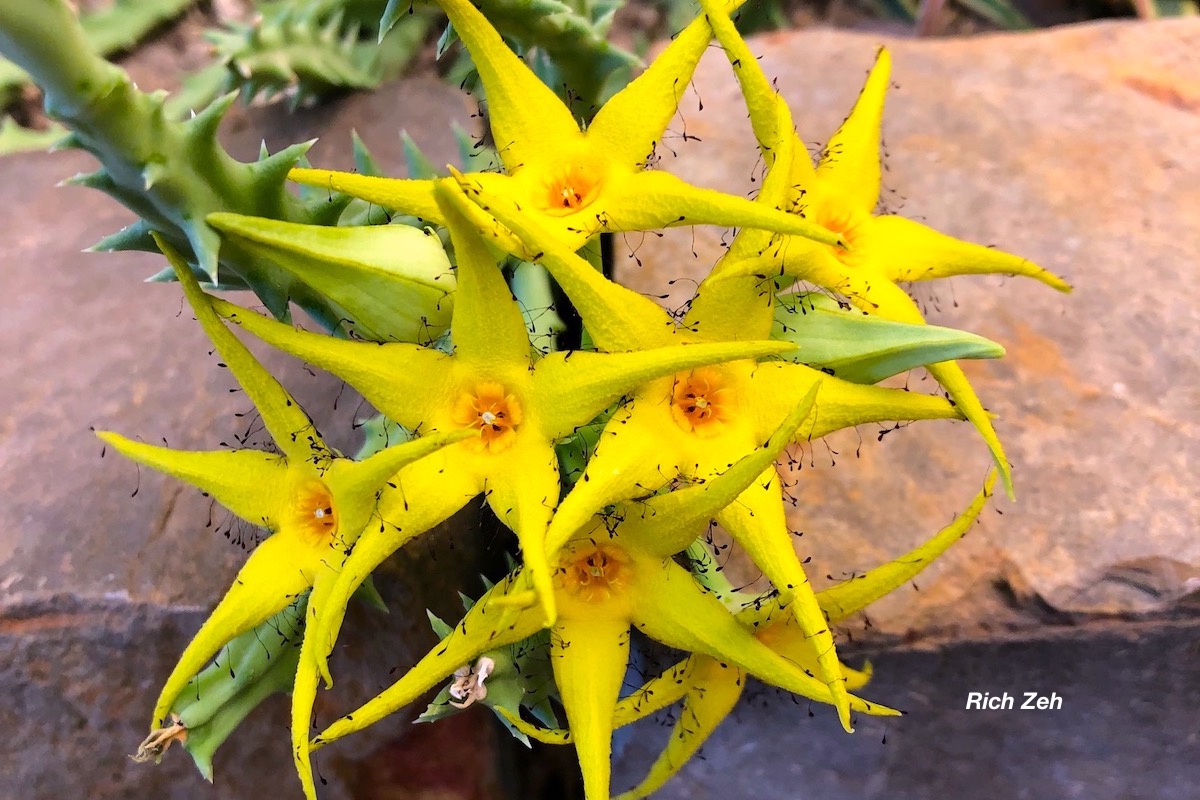

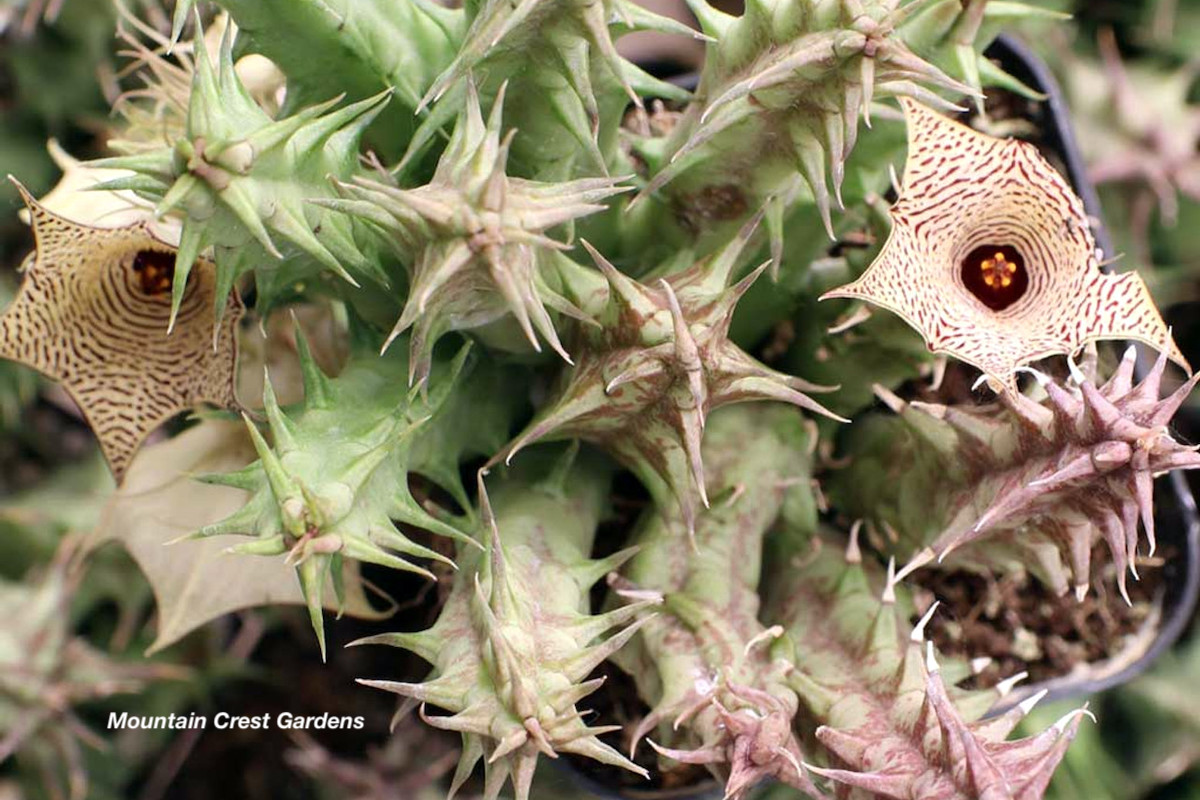
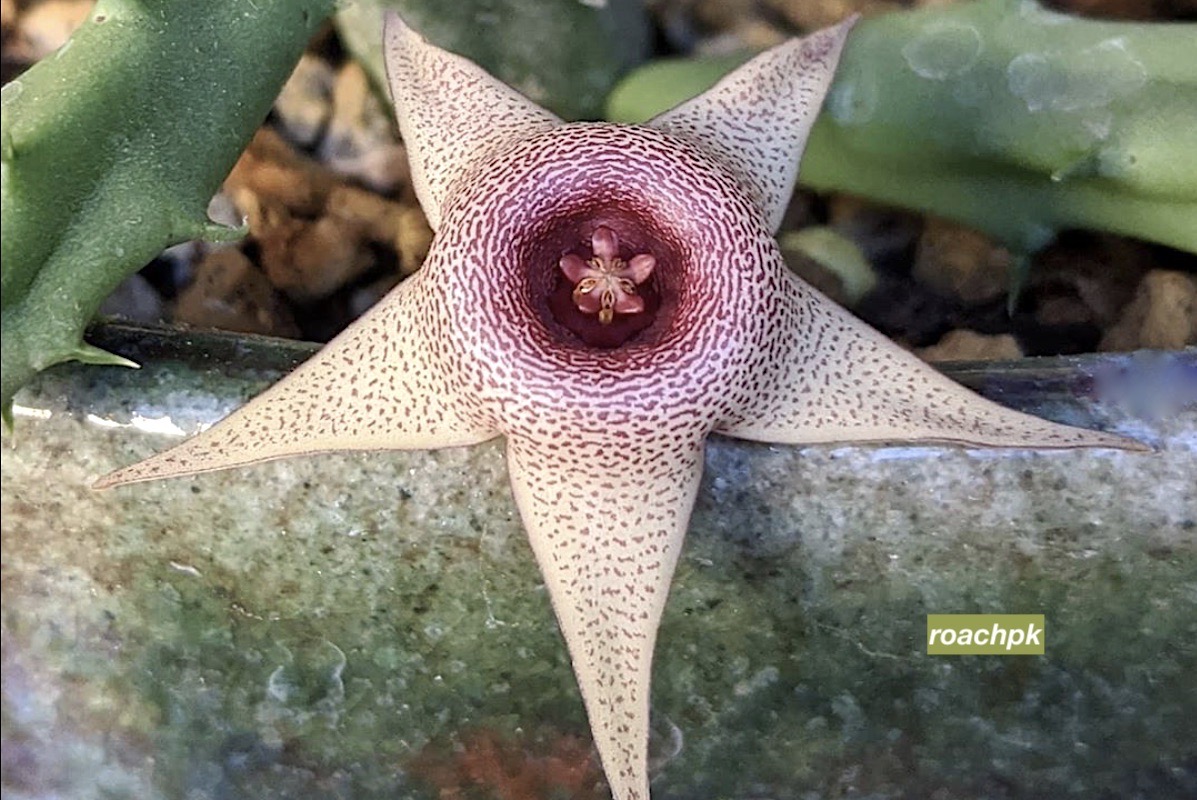
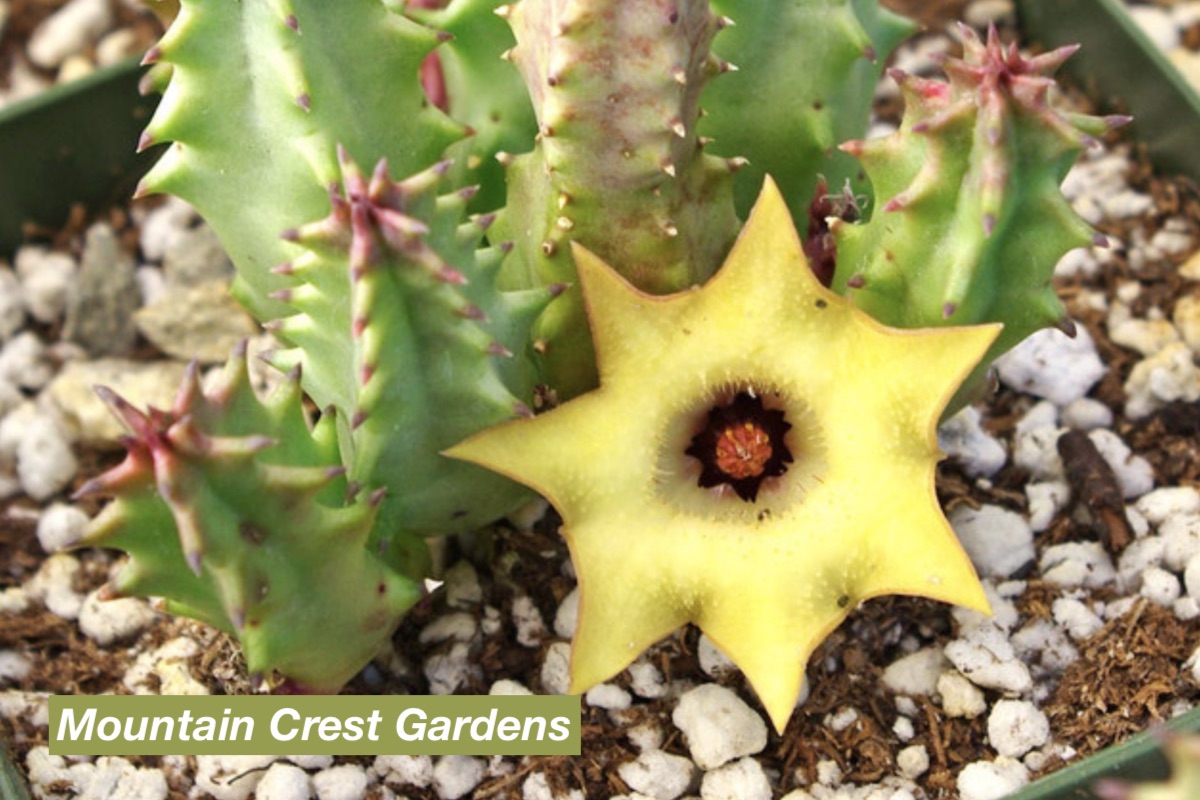
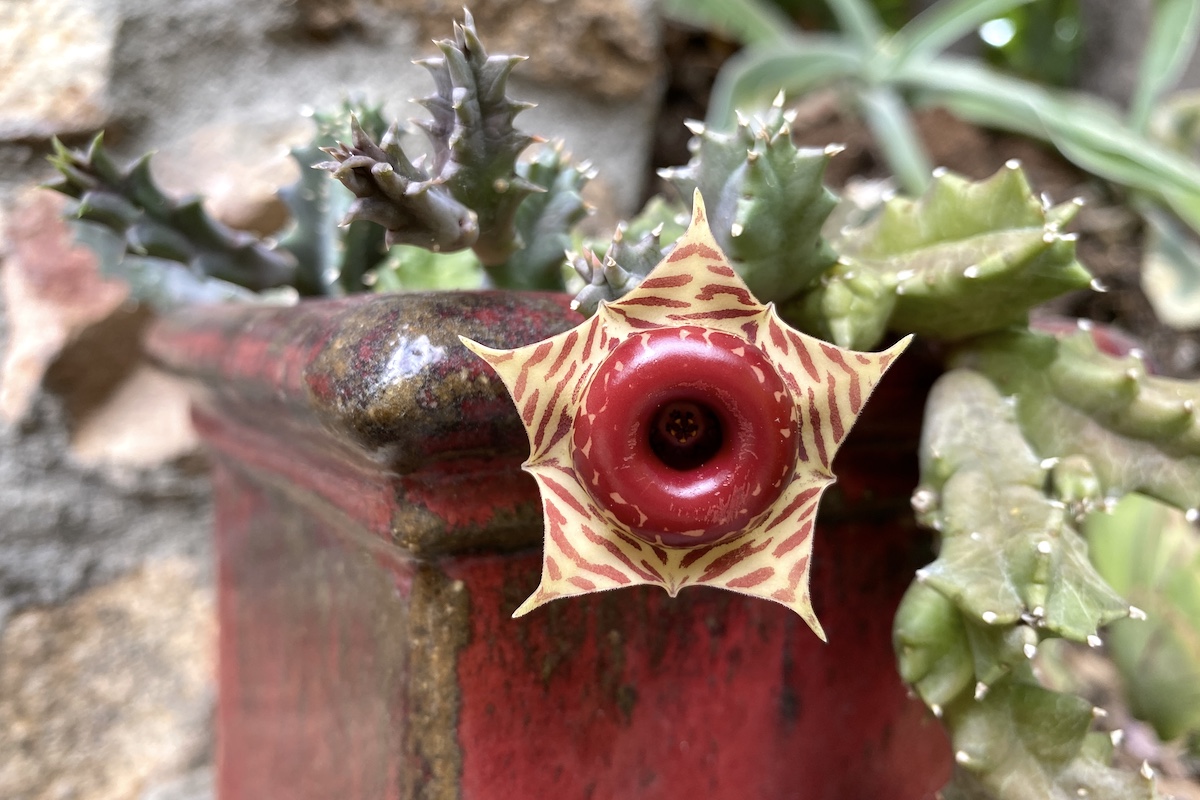

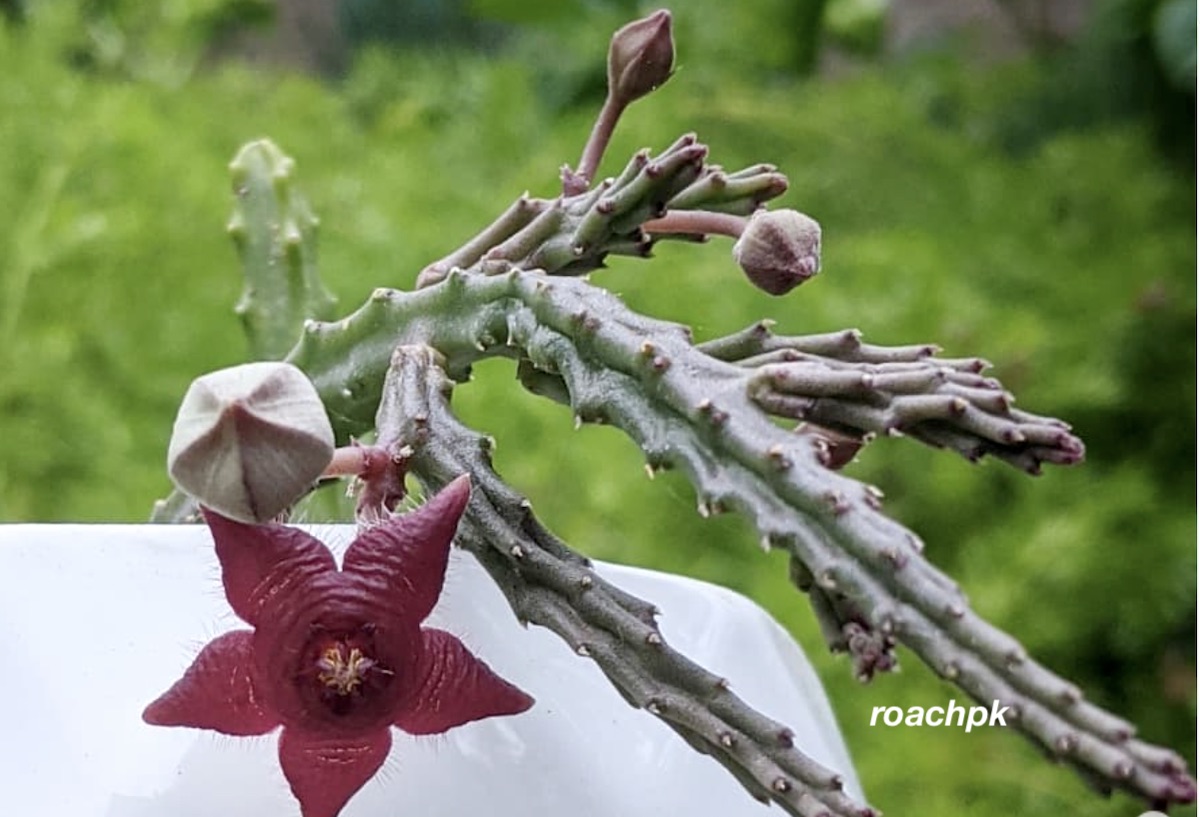
-custom_crop.jpg)

No hay comentarios:
Publicar un comentario